Tales from a Kapampangan ‘Mula’
My earliest memory of food was when I was about five years old. Two of my brothers, Bam and Pol (siblings number 8 and 10, respectively) and I would spend weekends with our mother’s brother Tatang Geni Suarez. He invited us for sleepovers basically to play with his only child, Nico. His wife, Imang Esmie, was the principal of a public school nearby, and was busy with paperwork even on weekends.
The Suarez household was run by three spinster grandaunts, who lived in a separate wooden house just a few meters away from our uncle’s bungalow. It had an open kitchen, with two or three wood-burning stoves, actually kalan made of clay with trivets to hold a palayok (clay pot) or kawali (cast-iron wok). Wood was stoked by blowing air through a foot-long bamboo tube.
The long wooden lamesa, or dining table, with matching, equally long bangkô (bench) on both sides, were also out in the open set on compacted ground, under a canopy of the extended roof.

It was here where we had all our meals. Breakfast was invariably paksing bangus (Tagalog paksiw na bangus, milkfish simmered in vinegar, cooked the previous day), pititian (bite-size chicharon) and singlé nasi (Tagalog sinangag, fried garlic rice).
Apung Metya, the eldest of the three spinsters, was in charge of the kitchen. She would sit us four tykes on one bench facing her, with our feet dangling from the seemingly high bench, and the table to our backs.
She’d hand-feed us alternately with a combination of a bit of bangus, pititian and some singlé nasi, dipped in toyo (dark soy sauce). I savored each mouthful, masticating it ever so slowly to extend it before the next mouthful. It was a multi-sensorial experience, a symphony of salty/sour/umami flavors, soft/crunchy textures, held together by the aromatic, garlicky fried rice. As a young boy experiencing this, my dangling little feet must have swayed vigorously with joy.
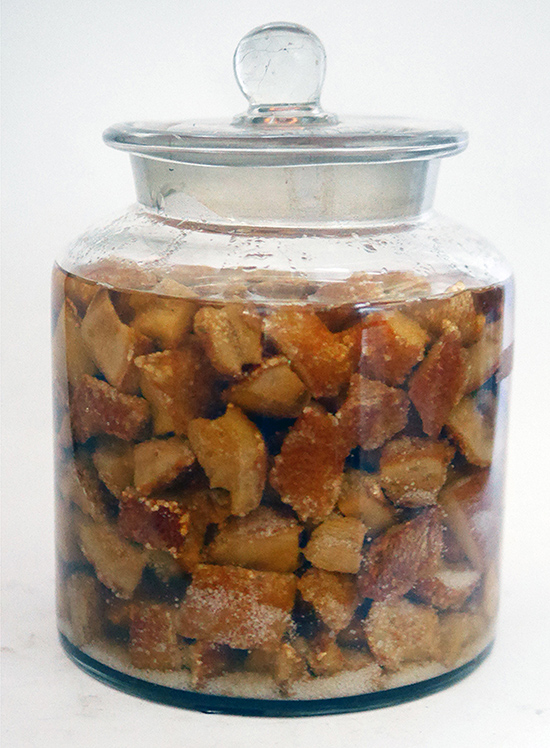
Apung Metya made sure each of us would have at least one turn with the fatty bangus belly. Oh, that was sublime! And for an added treat, we would play “jack en poy” for who would get the fish eyes.
Over time, during visits extending to high school, I learned to mash the green finger chili with the toyo, raising it up to another level. Of course, I was hand-feeding myself by then (wink, wink). Six decades into the present, I cringe at the thought of the millennials’ definition of a “happy meal” —eating in a fastfood joint with a free plastic toy.
Within sight of the kitchen was the mula, or backyard garden.
In Filipino, backyard garden simply is “bakuran” or “halamanan,” while in Pampango, it means more than that. So specific, in fact, the Kapampangan-Spanish dictionary by Fray Diego Bergaño published in 1732 defines “mula” as “a flower, vegetable or kitchen garden.”
Thus, a Kapampangan household is basically a self-sufficient unit. Most of its daily needs are provided by the mula.

In addition to the vegetables mentioned in the folk song Bahay Kubo, our uncle’s mula also included pandan leaves, lemongrass, chilies, papaya, kamias, malunggay, kamote tops, a tanglé or alagaw tree (premna odorata), pakiling/isis tree (whose abrasive leaves are used to sand wooden furniture), and numerous fruit-bearing trees like lansones (how sweet they were), guava, santol, sampalok and mansanitas, now close to extinction.
We always looked forward to summer vacations when most of the trees would be bearing fruits. There were also two rows of plots planted with different colors of daisies, speaking of backyard-to-table cuisine.
And a few meters further away was a pigpen, with the pigs fed with vegetable scraps and leftover food. It’s a common practice in the provinces that pigs were raised in the backyard, mainly to augment the family’s income, especially for the children’s matriculation. Or a pig was fattened for an upcoming fiesta to make into a lechon, or its many parts cooked into various dishes, starting with its head to make sisig, offal into kilain, pulutuk (Tagalog bopis), chicharon bituka (intestines) and bulaklak (flower fat), and its blood to make tidtad babi or dinuguan. Nose-to-tail and everything-in-between cuisine has been the norm in a Kapampangan kitchen for centuries.
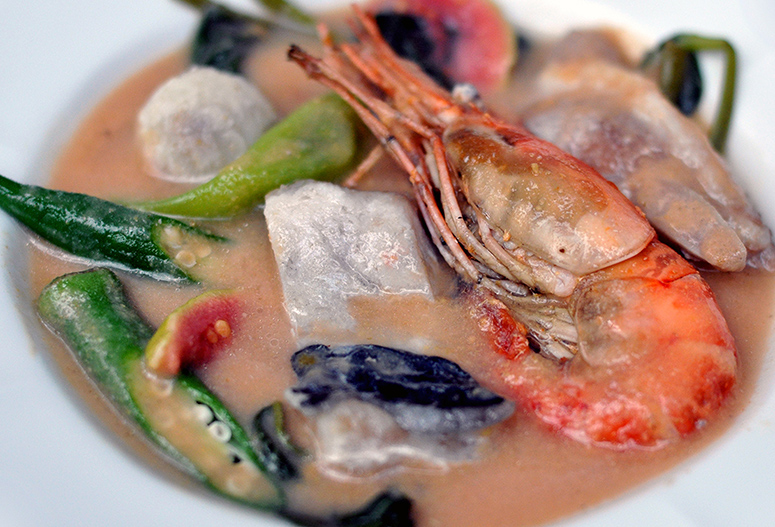
Apung Metya’s pantry always had a jarful of ready-to-fry pititian submerged in lard. The same lard was also used to sauté or fry dishes, since commercially made cooking oil wasn’t available yet then.
Pititian is the Kapampangan term for chicharon, from the root word titi or “to fry in its own fat.” It can be eaten as a pulutan (appetizer), as a sidekick for a main dish, like the one mentioned above with paksing bangus, or crushed into bits to sprinkle over munggo soup, suam mais (corn chowder), or pancit palabok. It can also be eaten as ulam or a viand in itself, accompanied with a salad of tomatoes, onion, salted duck egg, green mango and putat mangga (young mango leaves) when available, with baguk (Tagalog bagoong alamang, shrimp paste) and vinegar as dressing.

Next to the pigpen was a chicken coop, which produced the daily supply of brown-shelled native eggs. I recall Tatang Geni had a preference for the unfertilized rotten egg, colloquially called bugok. It was made into an omelet, which I never developed a taste for due to its foul odor.
Decades later, I found out this was one of the specialties of Balaw-Balaw Restaurant in Angono, Rizal, which they call bibingkang abnoy (colloquial for “abnormal”).
If one is to make tinolang manuk in Apung Metya’s kitchen, one simply catches the fattest chicken in the coop, picks a green papaya and some chili leaves as a garnish from the mula. If ginger is unavailable, add several stalks of salé or lemongrass to the chicken soup to make salé manuk. And if sampalok is in season, pick some of the unripe fruits and young, yellow green leaves to make sinampalukang manuk. Strangely enough, this latter dish may be the only sour soup that is not called sinigang.
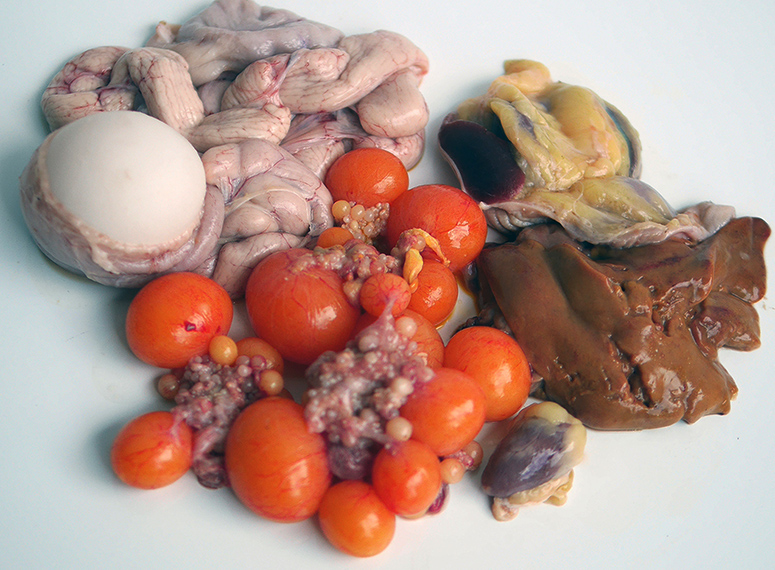
Sigang babi (pork), on the other hand, is alternatively flavored with sampalok, kamias or bayabas (ripe guava), depending on its seasonal availability. We call sinigang sa bayabas “bulanglang,” and can be done with bangus and ulang (freshwater prawns caught from the Pampanga river) as well. Our mother used to include all three for a Sunday meal get-together.
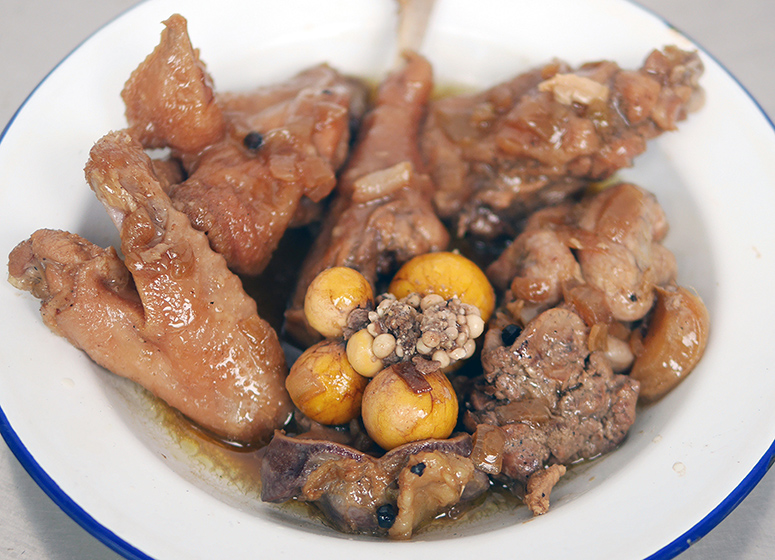
I always looked forward to an adobo of these native chickens, replete with its giblets and palanakan (Tagalog bahay guya, or eggs in different stages of development). From this adobong manuk, simmer it further by adding some kalamansi extract, tomato paste, chopped tomatoes, pimiento, onion and chicken liver, and voila, it is transformed into the Kapampangan asadong manuk. Though the meat of the native chicken is rather tough and takes longer to cook, its taste and flavor is far superior than the commercially raised chicken in poultry factories.
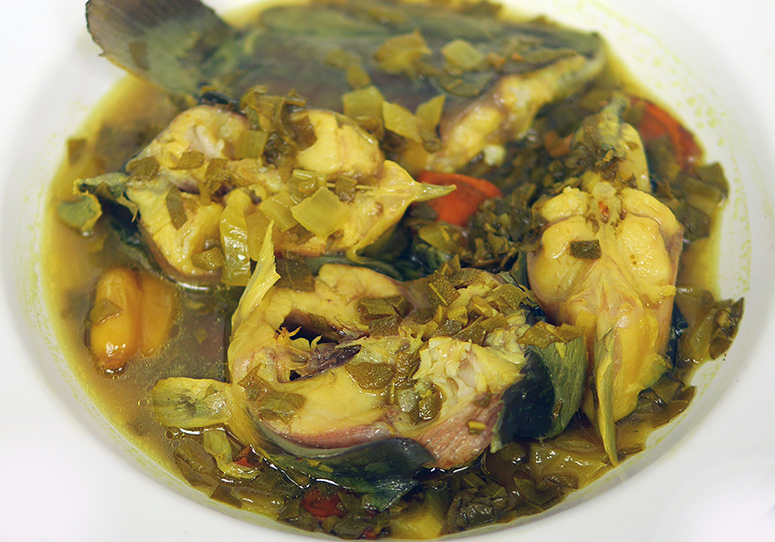
No mula would be complete without the medicinal tanglé or alagaw tree. Its young, aromatic leaves are also used in cooking, i.e. to stuff frogs to make betute, or added to adobong itu (catfish) together with ange (Tagalog luyang dilaw or turmeric). My mother recalled that Apung Metya would wrap catfish liver, fat and roe with alagaw leaves and simply grill it over the dying embers of the wood-fired kalan.
When our parents moved to a much bigger house in a gated subdivision not far from our old house around 1965 (I was nine years old then), they made sure we had our fair space of mula to plant fruit-bearing trees and a lawn for us to run around.
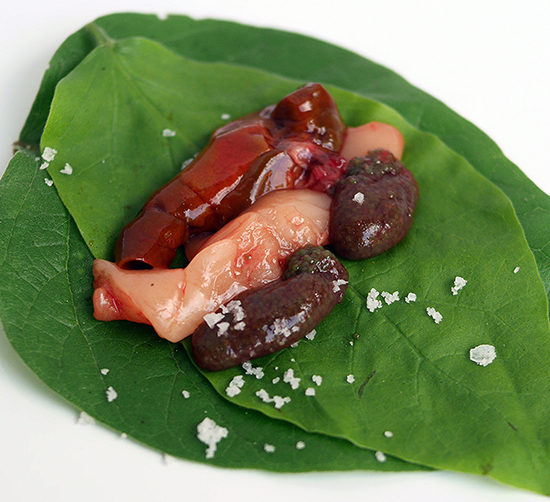
When they both passed, our youngest sibling CJ moved in with his family. I built my own house Bale Dutung just across the street, while our other brother, Pol, lives next door the main house. So, between the three households, we never run out of produce from our respective mulas.
There’s sampalok, three varieties of mangos, santol, rambutan, avocado, atis, duhat and sineguelas. And, year-round, we have pakô (fiddlehead fern), five kinds of chilies, saw-tooth cilantro, chives, arugula, malunggay, curry leaves, lemongrass, pandan, kamote tops, and wild talinum leaves. Oh, I almost forgot, CJ built a chicken coop in the lawn where we used to play.
It’s so nice to be living beside good neighbors. We all coped very well during the early stages of the pandemic.
Pagkaing walang kwento, walang kwenta.


